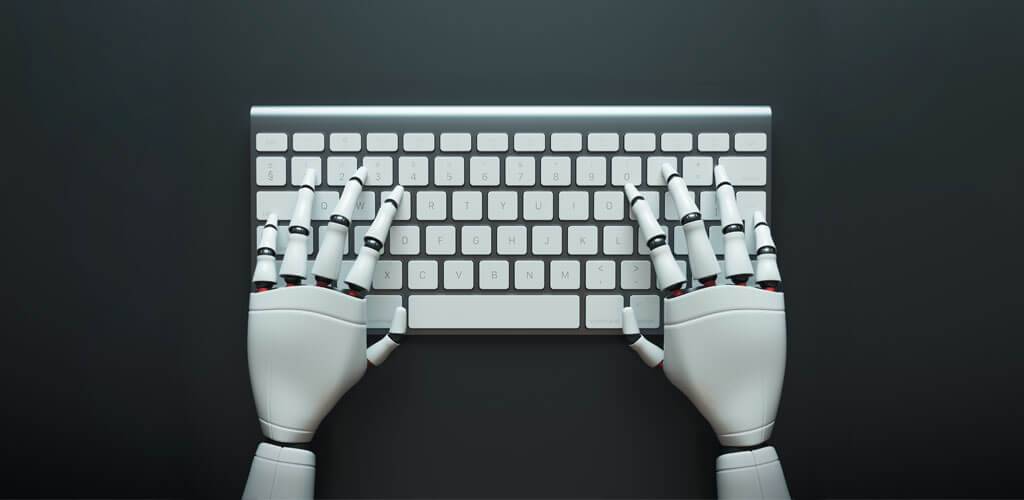AI Virtual Assistants: What can they do for workplace learning?
April 25, 2018
Artificial Intelligence (AI) is in the news a lot these days, but often with negative connotations, especially for work. There are predictions of mass redundancies as robots take over our jobs.
But let’s banish those nightmares and take a sober look at how AI’s working to our advantage. Instead consider how AI Virtual Assistants can make the workplace a more productive, efficient, and stimulating environment.
A virtual PA
You may well already have an AI Virtual Assistant at home. Think about Amazon’s Alexa or Apple’s Siri. These voice-activated, smart programmes are both driven by AI. You ask a question and you receive an instant answer. If you don’t like the answer, ask a follow-up question. A dialogue ensues. And, just like any smart human assistant, the virtual one learns from the interaction and begins to understand what you need. It adapts and responds – which is not the same as saying it controls.

What do you recommend?
The power of AI lies in its ability to understand and process natural language. Natural Language Processing enables computers to interpret what we write and speak. This means we can pose questions to these virtual assistants and receive intelligent and relevant answers, rather than a string of possible responses.
AI lies behind much of the software we use every day. When we use Amazon or Netflix, for example, we receive recommendations. That’s AI working in the background. It’s filtering and sifting information we provide, to give us not just a series of answers (like pages of Google search results), but an answer specific and relevant to us and our circumstances.
Intelligent interactions with AI-driven software result in recommendations, as we might expect when we’re talking to a human assistant.
AI in education
It’s not surprising that the possibility of using computers to interact with us has caught the imagination of teachers. In the US an AI-powered Virtual Assistant is being used as a teaching assistant (a TA).
Concerned that his TAs were being deluged by questions from students in his large and popular undergrad class, an AI professor at Georgia Tech, Ashok Goel, brought in another TA, named Jill Watson. But Jill wasn’t an ordinary grad student. In fact, she wasn’t even human. Jill was a computer program, based on IBM’s Watson platform.
Professor Goel and his graduate students fed ‘Jill’ sample questions and programmed her with the answers. After a couple of false starts, ‘Jill’ became so efficient that she was answering questions from students with a certainty of 97%. ‘She’ was learning from them too. What’s more ‘she’ could handle questions and give responses more quickly than her human colleagues. To keep her identity safe, they even introduced a delay so it seemed ‘she’ was taking time to reflect on her answers.
So convincing was the virtual teaching assistant that the students who received answers from TA ‘Jill’ had no idea they were interacting with a computer.

The rise of the chatbots
Impressive as the story of ‘Jill Watson’ is, it’s still exceptional. But, don’t think you have to live in an ivory tower to interact with a virtual assistant. They’re more common than you may think.
Ever used the 24/7 customer service feature on a website? Wondered how they’re always there to help? Chances are when you have a conversation online, you’re not talking to a human being, you’re chatting to a bot.
A ‘chatbot’ is another virtual assistant that engages the user in conversation, either through text or speech. You ask the question, the chatbot replies. The more advanced chatbots use machine learning, employing Artificial Intelligence. This means they learn from each interaction or conversation, detecting preferences and making recommendations based on past requests.
Chatbots are being used in all sorts of ways from answering financial queries, giving customer support, diagnosing healthcare issues, and even offering counselling. A bot like Replika is designed to act as a virtual friend.
Chatbots are close to becoming ubiquitous. They’re already all over Twitter.
Introducing a virtual assistant at work
Virtual assistants are no longer science fiction like HAL in ‘2001: A Space Odyssey’. Let’s see how they can they help us when we’re working.
At Learning Pool we’re looking at the use of AI-powered chatbots in the workplace. We can apply their intelligence to help us learn and assist us in our day-to-day tasks.
Consider, for example, what usually happens when new employees join an organisation. They might spend the first few days in meetings, then maybe they’ll receive some training either in a classroom or at their desk. Quite often they feel overwhelmed and isolated. What’s almost certain is that they won’t be doing much work.
Now imagine a different onboarding scenario. This time instead of chunks of time spent in meetings or training, the employees meet their new assistant, a chatbot. They get to ask the chatbot the questions they need answers to as they need them. Have an HR question, ask the bot. Want to know where certain facilities are, the bot will know. Need some training to support you in your role, your chatbot assistant will recommend some. So, employees set the pace and the requirements for training, while at the same time getting to grips with their new job.

How do we onboard the chatbot?
The great thing about these bots is that they can live and function inside an organisation’s current platforms and systems. They’re adept at information retrieval and learning the system from the inside. They provide direct access to information and learning.
People talk of the ‘invisible LMS’, Chatbots can make that a reality: not by replacing the LMS, but bringing the information in the LMS to the surface at the point of need, in the right context, in response to a direct question.
Chatbots deliver relevant information where it’s needed which means better support for learners, more productive use of employees’ time and better return on learning content development. It’s real just-in-time learning, courtesy of your 24/7 virtual assistant.
Learning in the workflow
Virtual assistants like chatbots can improve access to learning, but critically they also improve the relevance and impact of learning by moving it directly into the workflow. Training at work has often been distant: closeted in the classroom, locked in the LMS, and too quickly forgotten. With a virtual assistant, though, employees can ask for what they need when they need it – while they’re still working.
Learning becomes relevant and easy to access. You have a tutor, mentor and assistant with you all the time. You learn, and it learns to help you learn.
And the organisation learns. When a virtual assistant can’t answer an employee’s question, the organisation learns what its employees are missing. Unanswered questions reveal a genuine need. By answering them an organisation makes its learning more responsive and relevant.
The perfect assistant
Learning is no longer what you do once and then forget. It’s a constant process: learning on the job, learning by doing. With your AI virtual assistant always by your side, you can make that ideal a reality.
Learning Pool’s Otto is a perfect example of this. This chatbot has the facility to offer support to learners, employees and customers. Otto is there where you normally work, so you don’t need to take time away from the job or learn a whole new system.
About the author
Paul Healy has worked in the learning industry since 2003 in sales, learning consultancy, and programme management. He specialises in assisting companies with change management and innovation agendas.
Got a learning problem to solve?
Get in touch to discover how we can help

